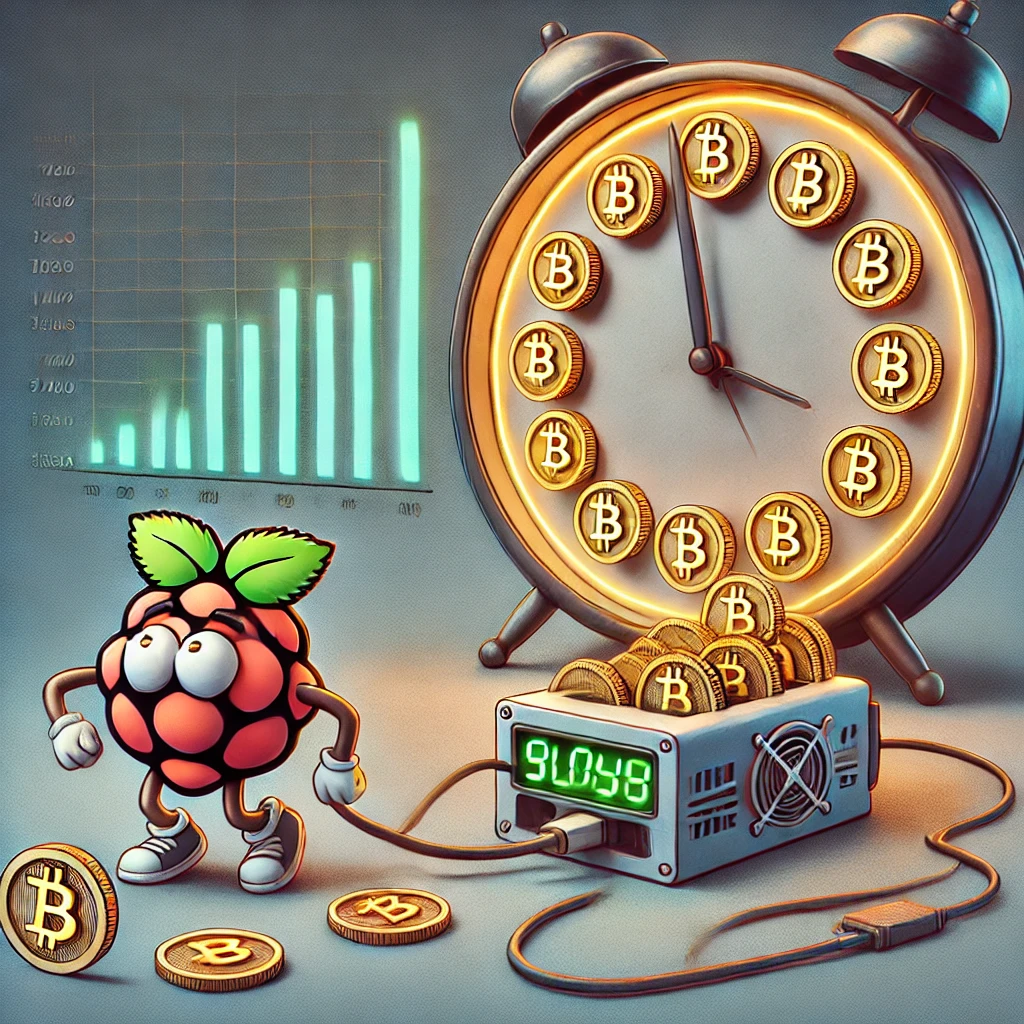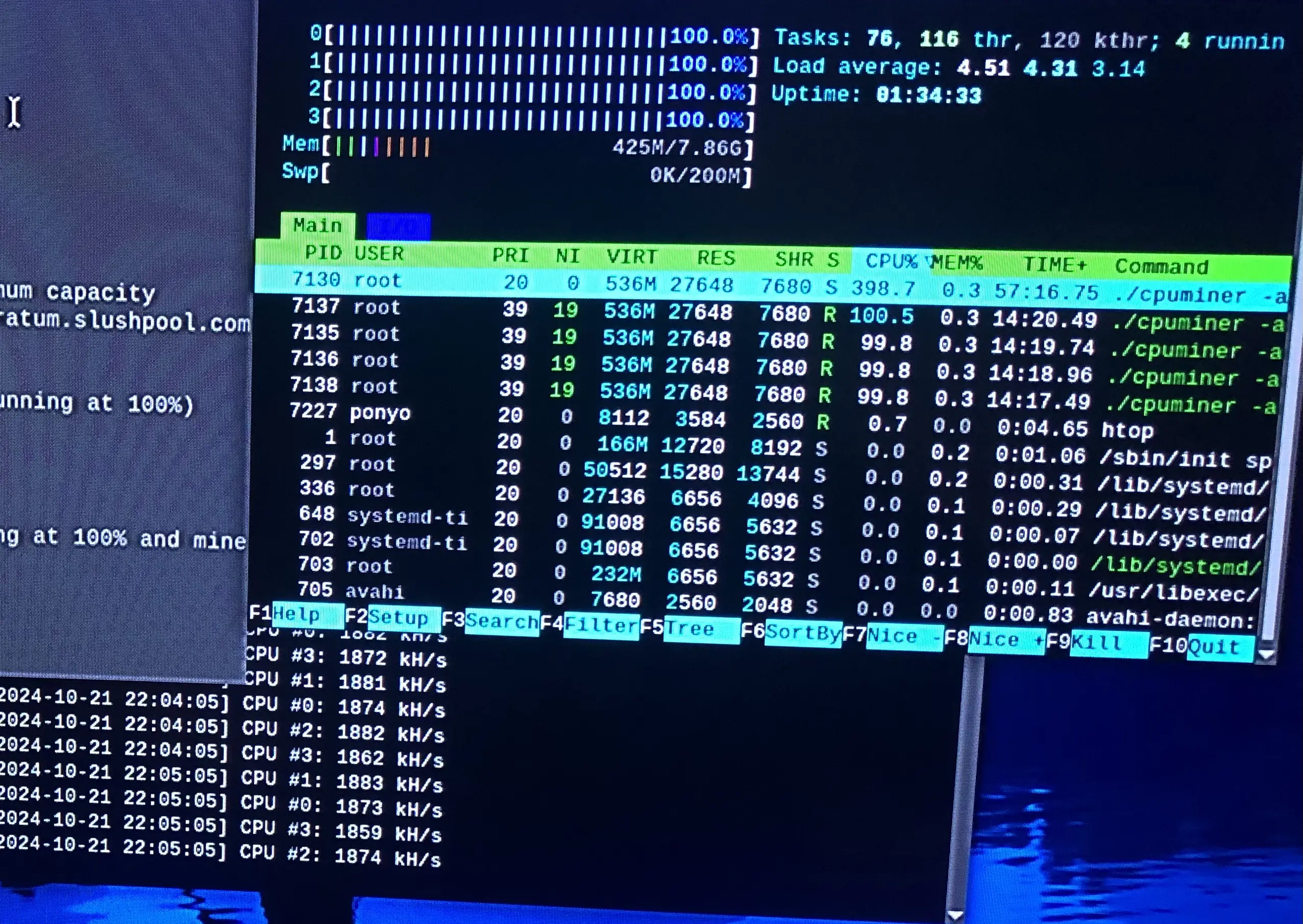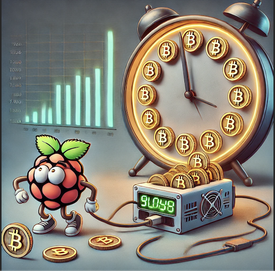Mining Bitcoin with a Raspberry Pi 5: A Fun and Hilariously Slow Journey
 Chris Bolosan
Chris Bolosan
Let’s get one thing straight: mining Bitcoin on a Raspberry Pi 5 is like trying to fill a swimming pool with a teaspoon. Possible? Technically. Practical? Not even close. But as a fun nerdy challenge from my Math professor for our Engineering club at Waubonsee College, it was the perfect experiment.
Here’s how it went and why I ended up building a bonus Pong game on the side.
Why Even Try?
It started off as curiosity. Could we mine Bitcoin using nothing but a Raspberry Pi? The result? Let’s just say my Pi was working overtime for a nonexistent paycheck. But hey, it was about the journey, not the destination because the destination was broke.
The Setup: Where Hope Was Born
1. Hardware:
- Raspberry Pi 5
- Heatsink and LED fan to keep it cool during its valiant yet futile mining attempts
2. Software:
- A mining script, a connection to Slush Pool, and hours of SSH troubleshooting
3. Visualization:

I added an HTOP resource allocator to visually demonstrate how hilariously hard my Pi was working. All four cores ran at 100% capacity, giving everything they had and still delivering next to nothing. Watching it grind away was like cheering for a snail in a drag race.

72 Hours Later: Reality Check
After few days of mining, Slush Pool graciously reported my progress: 0 BTC. The resource allocator confirmed what we already knew: mining Bitcoin on a Raspberry Pi would be worthless.

Bonus Project: Pong vs. AI
Since I knew the miner itself wasn’t exactly a crowd magnet, I decided to spice up my STEM event display. Enter Pong vs. AI, a simple Python game I coded as a side project. While my Pi tried and failed to make me rich, visitors could challenge an AI opponent in classic Pong.
Anyone interested in grabbing the code can check out my Replit file https://replit.com/@ChrisBolosan/pongAI. It’s a fun little game and unlike the miner, it actually works.
Key Highlights
💰 Earnings: 0 BTC. At least it tried!
🌱 Green Energy: Didn’t need much. The Pi barely used enough power to light a nightlight.
🔒 Security: Locked down SSH like a pro, because even if there’s nothing to steal, I’m not making it easy.
🎮 Pong: Let’s be honest. Most people stopped for the game, not the miner.
Lessons Learned
1. Visualization Matters: The resource allocator was a hit. Seeing all four cores maxed out really drove home the impracticality of mining Bitcoin this way.
2. Gaming Attracts Crowds: Coding Pong alongside the miner was a great way to draw people in. Everyone loves a bit of retro gaming nostalgia.
3. Fun > Profit: The project wasn’t profitable, but it was educational, entertaining, and an awesome talking point for crypto enthusiasts and gamers alike.
The Grand Finale
At Waubonsee’s STEM event, my Raspberry Pi Bitcoin miner stood as a testament to human curiosity and stubbornness. The addition of Pong vs. AI turned my miner into a mini arcade, sparking conversations about gaming, coding, and the wild world of cryptocurrency.
So, can you mine Bitcoin on a Raspberry Pi? Sure with an ASIC built in, but don’t expect to get rich. Unless you count the rich conversations and laughs this experiment sparked because then, mission accomplished.
Subscribe to my newsletter
Read articles from Chris Bolosan directly inside your inbox. Subscribe to the newsletter, and don't miss out.
Written by

Chris Bolosan
Chris Bolosan
I’m a Software Engineer in the Chicago area interested in building products that drive positive change. I am comfortable working both independently and as part of a team. When I’m not coding, you can find me helping others in the martial arts community, working on DIY home projects, tinkering with cars, or cooking up a new recipe. My expertise is in Southern-style BBQ. If you’d like to talk code, cars, food, or just plain building stuff, shoot me a message.